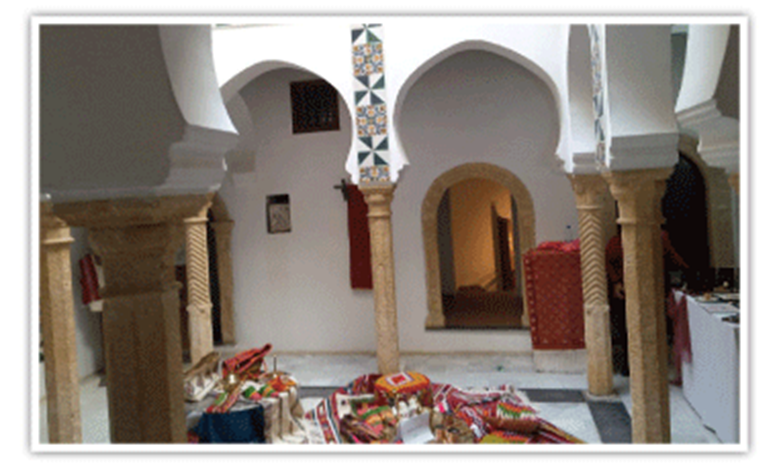Rias El Bahr Palace.. the fortress of Algeria's fever for three centuries

The entrance to the palace of Rias al-Bahr
On the central waterfront of the city of Algiers, a giant fortress stands visible from afar. The city has known and known it for hundreds of years. It has defended it for three centuries against European invasion. It is the "Palace of Rias al-Bahr".
Ottoman fortress
The Ottomans built this fort in the year 1576 below the ancient Kasbah district by order of Ramadan Pasha, the Ottoman ruler of Algeria in the years 1576 and 1577. Its construction continued for many years, as the authorities expanded it every time and developed it to increase its area and its ability to confront European attacks.
Rias al-Bahr Palace is also known as "Fort 23", a designation given to it by the French colonial authorities, and for its historical value it was classified by the International Organization for Culture and Science "UNESCO" in 1990 as a protected world heritage, within the protected ancient city of Al-Qasbah and its other monuments.

The palace was built in an area called "Qaa al-Sur" (the lower wall neighborhood), and its most famous resident was the chief, Mami Anaout, one of the most famous sea captains in the Algerian navy at the end of the 16th century.
The palace of Rias al-Bahr was provided with a equipped and supported roof to accommodate a large number of large cannons aimed at the sea to destroy the ships of the Spanish, Dutch, British, French and Danish invaders.
transient immunity
The American traveler William Spencer described this fort in his book " Algeria in the Era of Rias al-Bahr ," saying, "As for the Kasbah, it was surrounded by castles and fortifications equipped with firepower to defend the city of Algeria. The total firepower was great."
He added, "The city of Algiers, the Guarded, deservedly deserved its name from those fortifications built by the Turks. They fortified its defenses with great care and a high degree of military skill, and preserved it with similar care."
Cannon on the roof of Rias al-Bahr Palace
For his part, the researcher in history, Sheikh Mubarak Al-Maili, stated in his book " The History of Algeria in the Ancient and the Modern ," that "the barrier that prevented the occupation of Algeria during that period was the city's immunity, which enabled it to stand in the face of every occupation attempt coming from the sea." .
And Al-Maili goes on, citing a statement by the French consul in Algiers Kersey, in which he said, "Algeria is the only city in the world that deserves to be crushed by an infernal machine, but we are not sure of the effect of that, so that we can try."

Al-Maili stated that when the French forces were able to occupy the city of Algiers, "they did not enter through its main façade, where the Rias al-Bahr Palace is located, but entered from the back of the city."
Center for art and culture
Rias al-Bahr Palace consists of three palaces: Palace 17, Palace 18, and Palace 23, and 6 simple houses called al-Douerat (reducing a house), one of which is a chapel. UNESCO to restore the palace in the eighties .
In 1994, the authorities transformed Rias al-Bahr Palace into an arts and culture center in which fine art exhibitions and historical seminars are held. It receives daily visitors from history lovers, and special exhibitions are organized there.
This landmark witnessed visits by international personalities, including former FIFA President Joao Havalang and well-known athletes, including Franck Ribery and Stoichkov. It was also visited by the former Secretary-General of the United Nations, Kofi Annan, and King Abdullah II of Jordan.
Source : websites

